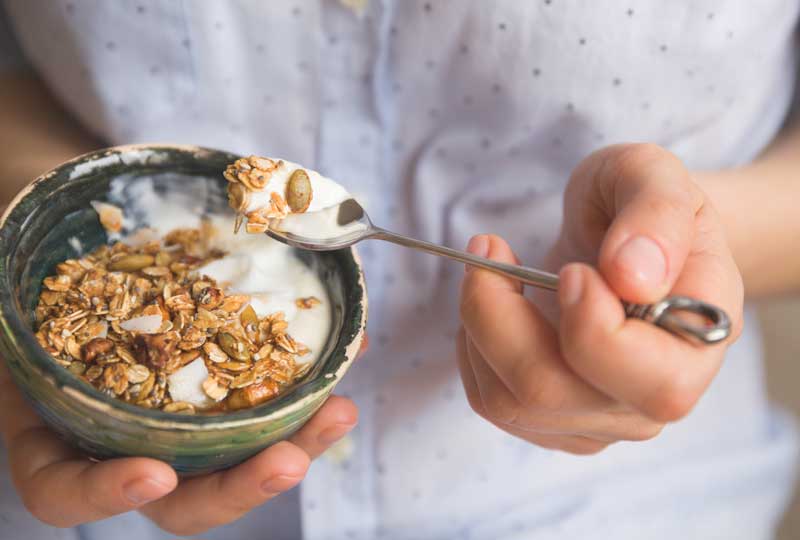You may not have to completely avoid dairy if you’re lactose intolerant. Our dietitian offers tips on how to enjoy milk, cheese and other dairy products (like ice cream!) safely.
The National Institute of Diabetes and Digestive and Kidney Diseases defines anyone who is lactose intolerant has a condition which they have unpleasant digestive symptoms such as bloating, diarrhea, gas or abdominal pain after you consume foods or drinks that contain lactose. Lactose is a sugar that is naturally found in milk and other dairy products, like cheese, yogurt and ice cream. For the body to digest lactose, it uses a natural enzyme called lactase to break the lactose down.
If your body doesn’t make enough lactase, you may not be able to break down or absorb lactose properly, which can lead to symptoms of intolerance. Fortunately, most people who are lactose intolerant can consume some amount of lactose without having gastrointestinal symptoms.
While some people think they need to completely cut dairy from their food choices, it’s best to first talk to your healthcare provider or a registered dietitian before eliminating any food group from your diet. Low-fat and fat-free dairy provides 13 essential nutrients in the diets of Americans. Avoiding dairy foods due to trouble digesting them could mean not getting enough of these essential nutrients. If the diagnosis of lactose intolerance is confirmed by a professional, keep in mind that each person with lactose intolerance is likely able to tolerate varying degrees of lactose.
If you think you suspect your gastrointestinal issues may be lactose intolerant but you don’t want to eliminate dairy products from your diet entirely, Vanderbilt University Medical Center registered dietitian Sarah Ferguson, MPH, RD, LDN, provides these tips.
- Tune into your body. Pay attention to your symptoms after eating and think about what type of dairy products you had to eat and how much you ate. The number of servings and the amount of lactose in the dairy product can impact how you feel after eating. Being aware of how foods and serving sizes impact your symptoms will help you make food choices that honor your body and limit your discomfort in the future.
- Pair dairy products with foods that don’t contain lactose. Choosing to enjoy dairy products along with other foods can slow digestion and might improve your tolerance. Have a small amount of cow’s milk on cereal or enjoy cheese with crackers or an apple rather than alone.
- Try Greek yogurt. It naturally has less lactose than regular yogurt and contains live and active bacterial cultures that aid in the digestion of lactose and can help reduce gastrointestinal problems.
- Choose hard, aged cheeses, such as cheddar, swiss, colby and parmesan. They contain very minimal amounts of lactose — as little as 1 gram or less for a 1.5 ounce serving. Soft, creamy cheeses like ricotta or cream cheese are higher in lactose.
- Try lactose-free dairy products. These products have been processed so the lactose is removed while still providing the same essential nutrients, such as calcium, potassium and vitamin D that are found in regular dairy products. You can find lactose-free milk, lactose-free yogurt and lactose-free ice cream at most grocery stores.
- Consider using lactase supplements. You can take lactase tablets before you eat or drink dairy products, or you can add lactase drops to milk before you drink it. The lactase breaks down the lactose, lowering your chances of having symptoms. Check with your doctor before using lactase products. Some people, such as young children and pregnant and breastfeeding women, may not be able to use them.

